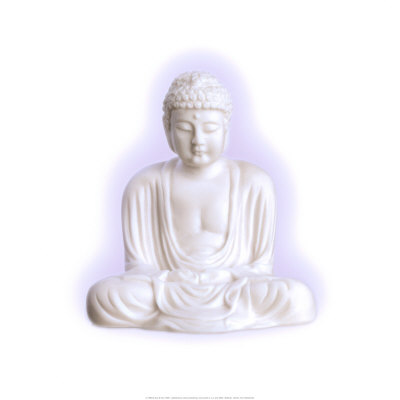

SOULFUL MIND

SOUL RESEARCH INSTITUTE
719-685-6294, 719-488-0548, 303-507-5169

Copyright 2008 SOUL Research Institute




Meditations
for developing
SOULful Mind
M24
M25
M26
M27
M28
M29

\
A SOULful Mind is a "Perfect Mind." It is defined as-
"that state of mind, a state of awareness, where there is thorough knowledge of the functioning of mind, where there is no feeling of owning the mind, where there is no sense of being a “thinker,” where there is no attachment to the mind as my mind, and where there is only awareness and knowledge that this is mind."
Generally speaking, developing a SOULful Mind means making it happy and blissful, and then transcending it, freeing it from all mental afflictions and attachments so that the states mentioned above can arise.
How to Make the Mind
Happy and Blissful
The experience of happiness and bliss is simply not attainable if we are engrossed in sensual pleasures and if we are subjected to sloth, torpor,
worry or remorse, agitation, restlessness, aversion, and doubt. We must remove these specific obstacles (to the required degree) by undertaking the training of developing soulful attitudes, soulful lifestyles, soulful body, soulful breath and soulful senses as we have already discussed.
After that, we must develop a basic understanding of the phenomena of happiness, bliss, and transcendence. We must also learn how to balance all the powerful mental faculties and how to become skillful in our pursuit. Provided we do all that, we can then train the mind to become happy and blissful through the practice of specific Soul Meditations as we will discuss later.
Understanding Happiness and Bliss
Happiness is a wholesome mental reaction, a mental formation, a thought. It is wholesome because it refreshes, energizes, invigorates, and cools down the mind. It results in the feeling of joy, elation, and gladness. It is experienced as that. It is manifested as that. Bliss, on the other hand, is not a mental reaction or a thought. It is rather an actual feeling, a pleasant feeling, a physical and mental experience.
An infant is generally referred to as “blissful.” The experiential state of an infant is blissful because the infant is devoid of thought. “An infant is blissful” is a more appropriate statement than “An infant is happy.”
Let us say, on one hot summer day, you become extremely thirsty and then you see a glass of cool water. What will be your immediate reaction? It will be obviously of happiness. You will be happy to see water. You will feel happy in mind. But when you will actually drink that glass of water, what you will feel is the bliss. This feeling of bliss will be different from the feeling of happiness because bliss is a pure feeling in the embodiment that is devoid of thought. The feeling of bliss is more profound than happiness because it pervades the entire being by flooding it. That is why bliss is more gratifying than happiness; however, it cannot occur without the happiness.
Happiness and bliss greatly assist in developing deep concentration because they literally gulp up the physical and mental afflictions that act as hindrances to deep concentration. Bliss is the nearest state of experience to deep concentration, and therefore, in Soul Meditation, bliss is immediately followed by deep concentration. In this sense, bliss is the proximate cause for deep concentration. Bliss is the sign that conveys the arrival of deep concentration, and it is the deep concentration which ultimately leads to the states of Soulful Mind.
Understanding Transcendence
In addition to understanding what is happiness and bliss, we have to understand the phenomenon of transcendence and then learn how to transcend the thoughts which occur in the beginning of meditation. It is important to understand that the mental phenomena of thinking and thoughtfulness are grosser compared to the mental phenomena of happiness and bliss. That is why learning to transcend is a prerequisite for making the mind happy and blissful.
Transcendence generally means, “Experiencing the fading away of a phenomenon.”
So, transcending thoughts would mean going beyond the experience of thinking and thoughtfulness by realizing their gross nature as their experience fades away. Transcending is like graduating, going beyond, letting-go, neutralizing, non-differentiating, becoming uninterested, becoming desireless, non-reacting, etc. Transcendence is that phenomenon which is responsible for the occurrence of extraordinary (or empowered) states of mind such as contentment, renunciation, equanimity, non-attachment, blissfulness, and peacefulness.
Transcending has the effect of surmounting, overcoming, and effectively stilling the consciousness. Transcendence thus facilitates penetration of subtler and subtler realities: from thoughts to happiness to blissfulness to peacefulness.
Learning to Balance Powerful Mental Faculties
Faith, vigor, mindfulness, tranquility, and understanding, these five powerful mental faculties play a significant role in the development of deep concentration which is essential for attaining states of Soulful Mind. Use these five faculties skillfully to create equilibrium of sort so that no excess of any one faculty is generated. Balance your faith with the rest of faculties to avoid emotional attachments, overconfidence, extremism, and religiousness. Balance your vigor or enthusiasm with the rest of faculties to avoid striving, overexertion, and agitation. Balance tranquility with the rest of faculties to avoid laziness, idleness, and aversion to activity. Balance the faculty of understanding with the rest of faculties to avoid smartness and shrewdness. The faculty of mindfulness does not need balancing because there is no such thing as excessive mindfulness. Mindfulness is the ultimate refuge and protection for the mind. The more of it the better it is for developing deep concentration.
Becoming Skillful in our Pursuit
Making the mind happy and blissful is not a difficult task, but a skillful one. It does not require goal-setting, hard work, pow
er, or passion. It requires pure skill. It requires skill in the way of living, skill in sociability, skill in effort, skill in volition, skill in recollection, and skill in equanimity. In order to develop some of these skills, I recommend doing the following:
1. Choose a living place which is free of dust, heat, smell, mosquitoes, insects, strong winds, noise, and nuisances of daily living.
2. Choose healthy foods that are suitable for the given climate and eat moderately.
3. Maintain silence most of the time and speak only in moderation and only if necessary.
4. Live in the company of virtuous and noble people and avoid the company of worldly-minded people.
5. Meditate regularly without fail. During prolonged meditations, use comfortable posture so you can sit firm and erect for long periods of time without pain. The posture should neither generate idleness nor agitation.
6. Practice meditation only when it is appropriate to practice. Do not force yourself to meditate. Exert the mind only to such an extent that it is not forced. If you feel agitated, then you are forcing the mind. When the mind is not at all willing to meditate, become aware of the fact that you are not able to meditate and simply let go for a while. Before trying again, read inspirational books, listen to spiritual discourses, do physical and breathing exercises, or simply take a walk in the woods.
7. Encourage yourself by reviewing the qualities of enlightened persons who are always happy and blissful. Stimulate the mind by recollecting the benefits of peace of mind and serenity which results from the blissful state of mind.
8. Give importance to developing happiness and bliss. Develop inclination for it. Become firm and unwavering in your practice. Develop a sense of urgency for attaining it; however, do not crave it. Do not try to achieve it. Just meditate and follow the pursuit and let go of any desire for it and let it happen.
Experiencing Happiness and Bliss
Practice the following five Soul Meditations to experience happiness and bliss from the grossest to the subtlest levels and to transcend.
SOUL Meditation M24
Accessing the
Realm of Concentration
Steps 1 through Step 12: Establish yourself in breath-awareness. During this practice, observe all the thinking that goes on in the background. Become familiar with the phenomena of discursive thinking, association of thoughts, initial application of thought, repetition of thought, etc.
Step 1:
Sit in a comfortable posture and review the benefits of breathing awareness which we just discussed.
Establish your mindfulness in the entire nostrils area. Take a long in-breath and out-breath with intention for developing concentration. Become aware of the breaths by feeling their touch in the nostril area.
Step 2:
Continue taking long in-breath and out-breath until you become aware of in-breath, out-breath, and the gap between the two. This awareness should be so distinct that the in-breath, out-breath, and the gap between the two are experienced as three separate events. These three events are three separate phenomena of consciousness which are jointly referred to as “breathing.”
Step 3:
Now, take a short in-breath and out-breath with intention for developing concentration. Become aware of the “shortness” of breaths by feeling the duration of their touch in the nostril area.
Step 4:
Continue taking short in-breath and out-breath until you become aware of in-breath, out-breath, and the gap between the two. This awareness should be so distinct that the shortness of in-breath, the shortness of out-breath, and the gap between the two are experienced as three separate events.
Step 5:
Go back to taking long in-breaths and out-breaths, and this time around, become aware of the length of the in-breath (its beginning, middle, and end) and the length of the out-breath (its beginning, middle, and end). Continue until you are thoroughly aware of the length or the extent of the breaths.
Step 6:
Follow with short in-breath and out-breath and become aware of the length of the in-breath (its beginning, middle, and end) and the length of the out-breath (its beginning, middle, and end). Continue until you are thoroughly aware of the length or the extent of the breaths.
Step 7:
Alternate between long breaths and short breaths and thoroughly establish the awareness of breathing in terms of its arising, extent (shortness or length), suspensions (gaps), and ceasing.
Step 8:
If your attention is hijacked by any thoughts arising in the mind, you may forget to observe the breath and simply flow with the thoughts. However, sooner or later, when you realize that your attention has run away, gently bring it back to breathing without aversion. Do not strive or crave attention. Do not develop aversion for non-attention if you cannot bring back the attention to breathing quickly. Simply keep bringing your attention back to breathing whenever it sways away. If you just cannot do it, if you just cannot concentrate, let go knowingly. Put down your attempt of concentrating for some time knowingly. Refresh yourself (by taking a short walk outside or by reading some inspirational spiritual texts) and start again knowingly. The key is to know or remain aware of everything that is happening without reacting.
Step 9:
Now, reduce the area of focus. Instead of nostrils, now focus on the small confined area below the tip of nose and above the upper lip. Repeat steps 2 through 8 for the reduced area of focus.
Step 10:
Now, breathe normally without intentionally taking long or short breaths. Continue to simply observe normal breath as it comes and goes. Observation of breath means feeling its touch in the area of focus just below the nostrils and just above the upper lip. At this stage, breathing normally and naturally without any conditioning is important. Let the thoughts come and go. There will be some thinking going on. There will be some reactions. However, do not develop aversion to them. Simply keep coming back gently to the awareness of natural breathing.
Step 11:
Notice how breath changes with changes in concentration levels. Notice how it becomes harsh and fast if thoughts of worries or anger arise while concentrating. Notice how it becomes soft and slow if worries and anger are replaced with ‘letting go’ and with compassion. Notice how the same effect can be achieved by intentionally making the breath soft and slow. This way, understand the link between the mind and the breath (body). Also, understand how movement of thought (or simply thought) is reflected in the movement of breath and vice versa.
Step 12:
Notice how breathing pattern changes if the attention is taken away by a feeling of pain in a specific part of the body; Notice how pain increases if attention is brought back to the painful area; Notice how pain reduces if attention is taken away from the painful area by letting-go. Also notice how pain becomes less intense if attention is brought back to breathing with an attitude of letting-go.
Step 13:
Continue the practice ardently and consistently for increasing periods of time without reacting to thoughts. Breath will soon become softer and subtler with increased concentration. Thinking will now reduce and thoughtfulness will arise. The breath will eventually become soft and subtle to such an extent that there will be a feeling of silky touch, a feeling of a subtle vibration in the confined area of focus. When this happens, there is momentary experience of happiness and bliss.
Step 14:
Subtle breath is now replaced by a subtle vibration, a subtle silky touch, a touch of the warmth of life. Observe this feeling ardently and consistently without reacting to any thoughts that may arise.
Step 15:
Now, move your attention to the area other than the small area below the nose tip. Experience the subtle vibration there. Then move your attention to other parts of the body by moving the awareness gently from part to part. Cover the entire body from top of head to the tip of toes. Repeat this process by going back and forth from top to bottom of the body. Do not stop at any one place for a long time. Neither move your awareness in a continuous manner. Just stay at one confined area of focus for five seconds and move on. The subtle vibrations will arise and pass away on their own accord.
Do not strive to feel the vibrations or the subtle touch. Do not develop craving for them. Your task is not to strive for any feeling of subtle vibrations. The main task is to develop awareness and concentration. This is an important warning because, if you are not aware of it, your concentration practice may become a means for the enjoyment of happiness and bliss that arise out of the feeling of subtle vibrations. Develop equanimity towards the pleasant subtle vibrations by simply observing them as they come and go. This is the first big challenge the meditator should confront successfully.
Step 16:
While moving the attention over the body, you may pass through soft areas of subtle vibrations and hard areas of pain and stiffness. Do not develop liking for soft areas and aversion for hard areas. Do not classify then as pain or pleasure. Simply observe them as they are without stopping for longer time in soft areas and without avoiding hard areas. With intentional equanimity, continue to move the attention throughout the body.
Step 17:
A stage will come when you will feel subtle vibrations throughout the body as you move your awareness from part to part. At this stage, take a long in-breath and out-breath with an intention of feeling the subtle vibrations in the entire body in one in-breath or one out-breath. Continue the practice until you can experience the whole body by feeling the subtle vibrations throughout the body in one ‘long’ breath.
Step 18:
Then, practice until you can experience the whole body by feeling subtle vibrations throughout the body in one ‘short’ in-breath and out-breath. Alternate the short and long breath and feel the entire body as a bundle of subtle vibrations in one breath without developing any craving. Soon, you will begin to experience lightness in the body.
Step 19:
Now, breathe normally. No intentional long or short breaths. Experience the whole body by feeling subtle vibrations throughout the body in ‘normal’ in-breath and out-breath. You will now begin to feel uplifting happiness and bliss as you breathe normally experiencing the whole body as a bundle of subtle vibrations.
Step 20:
The experience of subtle vibrations or uplifting happiness and bliss will not last for more than a few moments. Observe and understand this momentary nature of the experience. Through wise attention, understand the phenomenon of impermanence in your experience. Do not crave the experience of subtle vibrations or the experience of uplifting happiness and bliss. Let it come and go. Based on the understanding of impermanence, simply observe the arising and passing away of all experiences with equanimity.
Step 21:
Now, suspend the breath after exhalation and move your awareness from top to bottom of the body in a sweeping manner experiencing the whole body as a flow of awareness. Then move you awareness from bottom to the top in a sweeping manner experiencing the whole body as a flow of awareness. Do this only when the breath is in suspension. Do not hold the breath. Simply suspend the breath after the exhalation.
In this way, access the realm of happiness and bliss in steps through increasing levels of concentration. At the end of meditation, review these steps as four stages of concentration development to reflect upon your actual meditative experience of happiness and bliss.
Using this Soul Meditation, experientially understand how happiness and bliss is related to the development of concentration and how concentration deepens with the expansion (from momentary to showering to uplifting) of happiness and bliss. Establish yourself in the understanding: “How significant happiness and bliss is when it comes to deepening concentration! How significant transcendence is when it comes to deepening concentration! How significant concentration is when it comes to making the mind happy and blissful!”
SOUL Meditation M25
Absorbing the
Mind in Concentration (I)
How to Purify and Transcend the Mind
Follow Step 21 (from above) with Step 22 given below by continuously and skillfully practicing concentration for an extended period of time to attain mental absorption in breath. Such mental absorption is absolutely essential for removing subtle mental attachments.
Step 22:
Use the gap generated by the suspension of breath for stilling the bodily formations. While the breath is suspended, move your awareness from top to bottom and from bottom to the top of body in a sweeping manner with an intention of stilling the bodily formations and transcending the body. As the gap or the duration of suspension increases and your awareness flows effortlessly throughout the body, you feel as if the body is weightless, hollow, and empty. You feel as if there is only the flow of awareness. The body is now simply experienced as a flow of awareness. At this state, there is no thinking except a sustained thought or understanding that there is an experience of body as a flow of awareness and nothing else. When this awareness and understanding is established beyond doubt, there is pervading happiness and bliss born of transcendence. In these moments of transcendence, there is a feeling of desirelessness, renunciation, contentment, and satisfaction. There is neither craving nor aversion resulting in a feeling of equanimity. In such moments of experience, you enter the realm of absorption in body.
Step 23:
The experience of “flow of awareness” throughout the body and the “pervading happiness and bliss” will not last for more than a few moments. Observe and understand this momentary nature of experience. The flow of awareness will be interrupted by thoughts or the arising of painful bodily sensations. Observe the thoughts or the arising of painful bodily sensations until they pass away. No thought or a bodily sensation will last forever. Through wise attention, understand this phenomenon of impermanence in your experience at the level of the body. Do not crave the experience of the flow or the experience of pervading happiness and bliss. Nor develop aversion to painful bodily sensations. Simply let them come and go by staying firm in equanimity. Based on the experiential understanding of impermanence, simply observe with equanimity the arising and passing away of all experiences.
Step 24:
With practice, the periodic and sporadic moments of mental absorption will increase to such an extent that it will be sustained for a few continuous moments. These continuous moments will then increase to become short periods of absorption.
Step 25:
During these periods of absorption, contemplate on the nature of the body. Based on the experience you had, realize the vibrational and dynamic nature of the body structure. Try to change these subtle vibrational sensations in the body by autosuggestion. Try to intentionally stop them, or, try to increase their intensity. Realize how you cannot change any of their characteristics. Similarly, try to stop the painful bodily sensations by autosuggestion and realize how utterly impossible it is. Realize how the bodily sensations cannot be controlled by you. Realize how they simply arise and pass away (based on conditions) without you having any control over them. In this way, understand “body as body” and not as your body because you have no control over it. Understand that the body exists; however, it is not your body. Understand that there is no owning of the body. Understand the complete absence of “I” in the body.
Then, contemplate this way: There is no “I” in the body, then who is the one who is realizing all this; where is the “I” who understands all this? Contemplate to realize where is the “I” who is aware of it all. Contemplate with wise attention. With practice, there will be realization that such an “I” simply does not exist. What really exists is the “body as body” and just the “awareness and understanding” that it is body. Understand that the “awareness and understanding” was mistakenly taken as the “I.” Then, simply abide in the absorption of such “awareness and understanding” without clinging to the body or anything in the world.
Step 26:
After the experience of several periods of such mental absorption, take time to review the entire process of concentration from beginning to end and from end to beginning, (Step 13 through Step 25, and then Step 25 backwards to Step 13). Once the entire process is thoroughly contemplated and understood, renew the practice so you can enter, advert, attain, maintain, and exit mental absorption at will and without any difficulty. In this way, perfect the process of mental absorption.
SOUL Meditation M26
Absorbing the
Mind in Concentration (II)
Step 27:
While abiding in mental absorption and experiencing lightness, hollowness, and emptiness of body, feel the pervading happiness and bliss born out of transcendence of the body. Now, move your awareness from the feeling of lightness, hollowness, and emptiness in the body to the feeling of happiness and bliss itself. Feel happiness and bliss as a mere feeling, as a feeling-phenomenon and not as something that is in the body. With practice, a stage will come when the mere feeling is experienced and not labeled as happiness and bliss. Feeling will be experienced as “feeling” and not as a feeling of happiness or bliss, neither as a bodily feeling. Now, the feeling is not thought about and labeled but simply experienced and understood as just a feeling to such as extent that there remains only “awareness and understanding” of it. There is no thought, no labels for that experience. When this “awareness and understanding” is established, there is pervading happiness and bliss born of transcendence of body and thought. In these moments of transcendence, there is thoughtlessness because of unification of consciousness and mind. This unification results in the experience of poise, steadiness, coolness, and oneness. There is neither craving nor aversion, which results in a feeling of equanimity. However, this feeling of equanimity is a pure feeling without the thought of equanimity. Thus, it is not only purified of body but also of thought. In such moments of experience, you enter the realm of absorption in mind.
Step 28:
During the practice of absorption, pleasant or unpleasant feelings may arise. Joy or sorrow may arise. Notice how these feelings arise, last for some time, and eventually pass away. Notice how the experience of transcendence also does not last for more than a few moments. Observe and understand this momentary nature of experience. Through wise attention, understand this phenomenon of impermanence in your experience at the level of the “mind.” Do not crave the experience of pleasant feelings, joy, or transcendence. Nor develop aversion to sorrow or any other unpleasant feelings. Simply let them come and go. Based on the experiential understanding of impermanence, simply observe with equanimity the arising and passing away of all experiences.
Step 29:
During the periods of absorption, contemplate on the nature of “feelings.” Based on the experience you had, realize the transitory and dynamic nature of the feelings. Try to change them by autosuggestion. Try to intentionally stop the feelings of sorrow if they arise, or, try to increase the intensity of joy or bliss. Realize how you cannot change any of their characteristics. Realize how utterly impossible it is. Realize how the feelings cannot be controlled by you. Realize how they simply arise and pass away (based on conditions) without you having any direct control over them. In this way, understand “feeling as feeling” and not as your feeling because you have no control over it. Understand that the feeling exist; however, it is not your feeling. Understand there is no owning of the feeling. Understand the complete absence of “I” in the feeling.
Then, contemplate this way: There is no “I” in the feeling, then who is the one who is realizing all this; where is the “I” who understands all this? Contemplate to realize where is the “I” who is aware of it all. Contemplate with wise attention. With practice, there will be realization that the “I” simply does not exist. What really exists is just “feeling as feeling.” Realize that Feeling feels and there is “awareness and understanding” that it is a Feeling. That’s all. Understand that the “awareness and understanding” was mistakenly taken as the “I.” Then, simply abide in the absorption of such “awareness and understanding” without clinging to feelings or anything in the world.
SOUL Meditation M27
Absorbing the
Mind in Concentration (III)
Step 30:
While abiding in the deeper realm of absorption and experiencing steadiness, coolness, and oneness of body and mind, move your awareness from the feeling of steadiness, coolness, and oneness to the feeling of happiness and bliss itself. Feel happiness and bliss as a mood, as a state of consciousness, as a phenomenon of consciousness, and not as something that is in the body and mind. With practice, a stage will come when feeling becomes a mere “experience” and not labeled even as a feeling. Feeling is experienced as a “state of consciousness” and not as a feeling of body or mind. The state of consciousness is not thought about and labeled but simply experienced and understood as just a phenomenon of experience to such as extent that there remains only that “awareness and understanding.” There is no bodily feeling, no thought, no labels for the experience, but just the state of consciousness. When this “awareness and understanding” is established, there is bliss born of simply the state of consciousness. There is neither craving nor aversion, which results in equanimity. However, this equanimity is pure bliss and pure awareness- a state of consciousness. It is purified of body, thought, and feeling. In such moments of experience, you enter the realm of absorption in consciousness.
Step 31:
During the practice of absorption, various states of consciousness (moods) may be experienced. A state of contraction due to anger or lust, a state of expansiveness due to non-anger, a state of greatness due to non-lust, a state of distraction, a state of concentration, a state of pervading vastness, a state of delusion, a state nearing unsurpassability or perfection, etc. Notice how these states of consciousness arise, last for some time, and eventually pass away. Observe and understand this momentary nature of experience. Through wise attention, experientially understand this phenomenon of impermanence at the level of consciousness. Do not crave the wholesome states of consciousness; nor develop aversion to unwholesome states. Simply let them come and go. Based on the experiential understanding of impermanence, simply observe with equanimity, the arising and passing away of all experiences.
Step 32:
During these periods of absorption, contemplate on the nature of “states of consciousness.” Based on the experience you had, realize their transitory and dynamic nature. Try to change the state of consciousness by autosuggestion. Try to intentionally stop the angry mood if it arises or try to increase the intensity of expansiveness. Realize how you cannot change any of their characteristics. Realize how utterly impossible it is. Realize how the state of consciousness cannot be controlled by you. Realize how they simply arise and pass away (based on conditions) without you having any control over them. In this way, understand “consciousness as consciousness” and not as your consciousness because you have no control over it. Understand that the consciousness exists; however, it is not your consciousness. Understand there is no owning of the consciousness. Understand the complete absence of “I” in the consciousness.
Then, contemplate this way: There is no “I” in the consciousness, then who is the one who is realizing all this; where is the “I” who understands all this? Contemplate to realize where is the “I” who is aware of it all. Contemplate with wise attention. With practice, there will be realization that such an “I” simply does not exist. What really exists is the “consciousness as consciousness” and the “awareness and understanding” that it is consciousness. That’s all. Understand that the “awareness and understanding” was mistakenly taken as the “I.” Then, simply abide in the absorption of such “awareness and understanding” without clinging to consciousness or anything in the world.
SOUL Meditation M28
Absorbing the
Mind in Concentration (IV)
Step 33:
While abiding in such absorption and experiencing pure bliss and pure awareness, move your awareness to the awareness of bliss itself. Experience the bliss as merely awareness and nothing else. With practice a stage will come when experience becomes “a state of awareness.” Experience is understood as a “state of awareness” and not as a feeling of body nor mind nor as the state of consciousness. This understanding reaches to such an extent that there remains only “awareness and understanding.” There remains no bodily feeling, no thought, no labels for the experience, no states of consciousness, but just pure awareness. When this “awareness and understanding” is established, all feelings, thoughts, and states of consciousness (such as bliss) are transcended. There is just pure equanimity with pure awareness. In such moments, you enter the realm of absorption in awareness and understanding. This is the realm of the SOUL which is beyond Body, Mind, and Consciousness and yet not separate from it.
Step 34:
After the experience of several such periods of absorption, take time to review the entire process of concentration from beginning to end and from end to beginning for each stage of mental absorption. Once the entire process is thoroughly contemplated and understood, renew the practice so you can enter, advert, attain, maintain, and exit all stages of absorption at will and without any difficulty. In this way, perfect your absorption.
SOUL Meditation M29
Perfecting the Mind
Now, follow-up Step 34 above by perfecting the concentration by eradicating all remaining traces of ego (“I-ness”) including its seed form and then abiding in that absorption. Such mental absorption is unconditional; beyond experience; beyond words.
After perfecting all the stages of mental absorptions, a stage will come when the faculties of awareness, non-reaction, wise attention, and concentration will be perfected. At this stage, there is oneness of body, mind, and consciousness born out of transcendence. There is oneness born out of pure awareness and understanding. What then remains is just this “pure awareness and understanding.” While abiding in this “pure awareness and understanding,” contemplate the fading away of awareness itself. Contemplate the cessation of awareness itself. Contemplate the relinquishment of awareness itself. With such contemplation in deep concentration, a moment will come when the subtle “I-ness” or ego which is bound up with the awareness itself will be relinquished. This moment of relinquishment is the moment of mental perfection, the moment of transcending the SOUL- the moment of enlightenment which is beyond experience.
FAQs
Will I be ever able to experience all these mental absorptions and attain enlightenment?
It is just not possible for anybody to understand all the stages of meditative absorptions and enlightenment by simply reading about it. It is not possible to understand majority of it by even deep intellectual scrutiny. Without meditative experience, it is hopelessly impossible to thoroughly understand any of it. If meditation becomes your way of life, and if you practice consistently and ardently over a long period of time, then the understanding will come automatically, without much intellectual efforts.
Enlightenment is possible for all those who live a meditative life. It is not necessary to renounce everything and become a recluse or a monk. Even though monkhood accelerates the meditative progress, it is not necessary. The most important thing is to meditate and to meditate rightfully all the time, which means:
• Be mindful, non-reactive, and wisely attentive all the time while you are actively meditating
Be mindful, non-reactive, and wisely attentive all the time while you are actively meditating
• Be mindful, non-reactive, and wisely attentive while you are passively meditating
Be mindful, non-reactive, and wisely attentive while you are passively meditating
C


